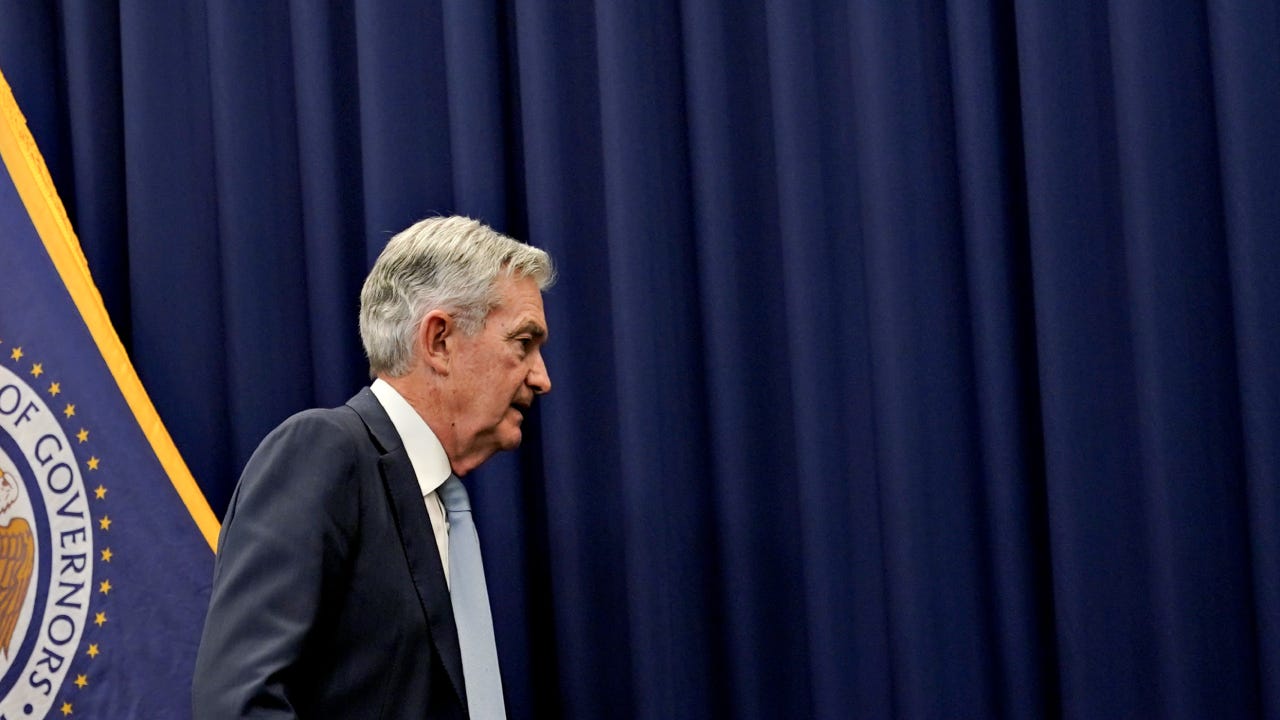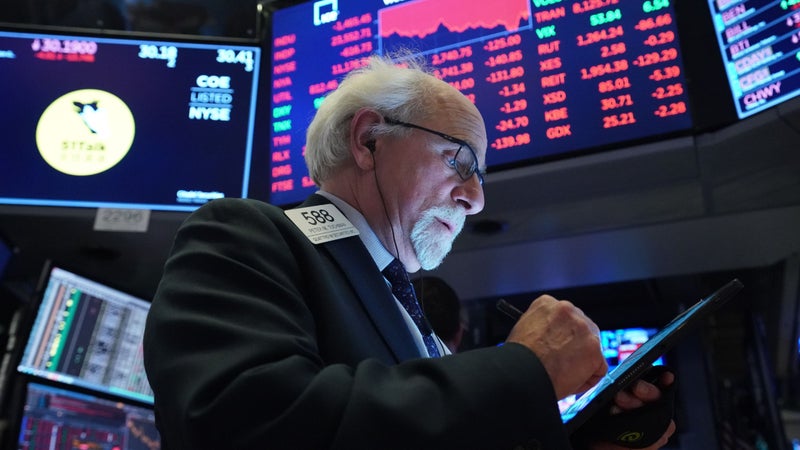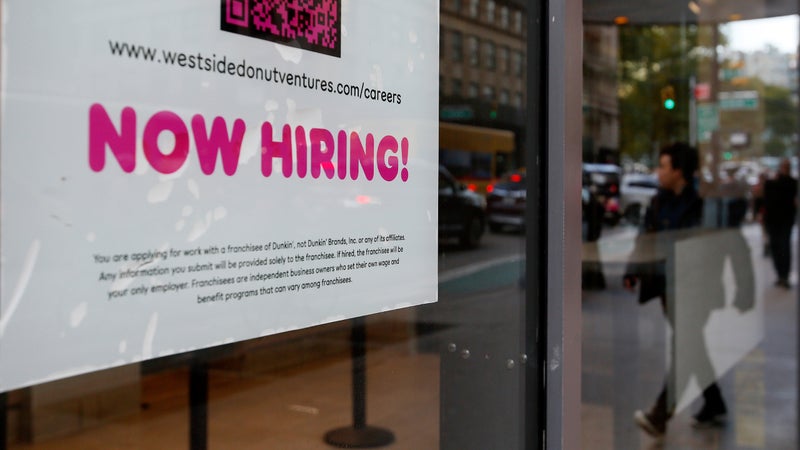Survey: Fed seen aggressively hiking rates above 5% in 2023

The Bankrate promise
At Bankrate we strive to help you make smarter financial decisions. While we adhere to strict , this post may contain references to products from our partners. Here's an explanation for .
Stubborn inflation could force the Federal Reserve to lift interest rates even higher than the majority of officials are currently projecting, according to Bankrate’s latest survey of economists.
The Fed will likely take rates to a target range of 5.25-5.5 percent before they end their extraordinary rate hikes, Bankrate’s Fourth-Quarter Economic Indicator poll found. Economists’ average estimate for the U.S. central bank’s peak federal funds rate was 5.35 percent. That’s up from experts’ 4.71 percent average prediction in the third-quarter survey — and a quarter-point higher than the peak target range Fed officials themselves penciled in on their December projections.
The predictions also correspond with forecasts from Bankrate Chief Financial Analyst Greg McBride, CFA, who is penciling in a fed funds rate for the year at 5.25-5.5 percent.
Consumers may want to get comfortable with those historically expensive borrowing costs. The majority of economists (or 62 percent) say the Fed probably won’t begin cutting rates until 2024, defying investors’ expectations that officials will have no choice but to cut rates and save the economy from a recession by the fall of 2023.
In this rising interest rate environment, the good news is that the return on savings has been on an upward tilt and still appears to have room to run on the upside. Given the high level of concern about a recession, there’s no shortage of reasons why savings should be a top financial priority in the current environment.
— Mark HamrickBankrate senior economic analyst
Key takeaways on the Fed from Bankrate’s Fourth-Quarter Economic Indicator survey
- Economists see the Fed’s interest rate peaking in a target range of 5.25-5.5%.
- The Fed sees its rate peaking in a target range of 5-5.25%.
- Forecasts for the Fed’s peak interest rate range from a low of 4.75% to a high of 6.25%.
- The Fed’s lowest forecast for interest rates was 4.9%, while its highest was 5.6%.
- 62% say the Fed probably won’t cut interest rates until 2024.
- The 10-year Treasury yield will hit 3.79% a year from now.
Why economists say the Fed will have to do even more to beat inflation
The forecast puts rates in a position consumers haven’t seen for years, though how long it’s been is difficult to track because the Fed started setting its key rate in a target range after the financial crisis.
Technically speaking, a fed funds rate at 5.35 percent would be the highest since 2001. Yet, it previously hit the lower bound between June 2006 and September 2007.
The Fed’s aggressive posture is all because of inflation. Not only have prices risen faster than any Fed official ever expected, but they’ve also lingered longer than anyone ever thought. A year ago, officials projected inflation in 2022 would hit an annual pace of just 2.6 percent, while another gauge excluding food and energy was expected to hit 2.7 percent. Prices ended up rising more than twice as fast, instead rising in October by 6 percent and 5 percent, respectively, according to the Department of Commerce.
Each upside inflation surprise has prompted the Fed to upwardly revise its rate projections. A year ago, the Fed expected to raise rates to 0.75-1 percent. What was unthinkable at the time ended up happening instead: A 4.25-4.5 percent target range at year-end, the most rate hikes in a single year since the 1980s.
Economists’ forecasts are notable because they point to risks that the Fed may still be getting its rate projections wrong. In fact, the majority (or 62 percent) of economists see officials having to raise interest rates even higher than the Fed’s median projection, while the most hawkish of estimates in the survey (6-6.25 percent) show interest rates eclipsing even the highest Fed forecast by half a percentage point (5.5-5.75 percent).
At the same time, however, the most dovish rate estimates from Fed officials (4.75-5 percent) beat the lowest forecast among economists (4.5-4.75 percent) in Bankrate’s poll. It shows some experts — albeit to a lesser degree — think rates may surprise to the downside, too.
There’s one thing economists and the Fed largely appear to be aligned on: The unlikelihood of rate cuts in 2023. The largest cluster of economists (62 percent) saying the Fed probably won’t begin cutting rates until 2024 matches the Fed’s forecasts. By the end of next year, interest rates could sink to 4-4.25 percent, the U.S. central bank expects.
“The Fed will want to be sure that its rate increases are bringing inflation down before it starts reducing rates,” says Bernard Markstein, president and chief economist of Markstein Advisors. “It doesn’t want to lower rates too early. Thus, the Fed will not lower rates until 2024.”
Those expectations, however, do contradict what investors are expecting. Market participants see the Fed hiking interest rates to 4.75-4.5 percent, then cutting them by half a point at the end of 2023, according to CME Group’s FedWatch. About 2 in 5 economists (or 38 percent) in Bankrate’s survey agreed with those expectations, projecting the Fed could begin cutting rates at some point in the second half of the year.
“As the economy softens and inflation falls, the Fed will need to signal it’s willing to support the economy with lower rates,” says Robert Frick, corporate economist at the Navy Federal Credit Union, one of those experts projecting rate cuts this year.
Hear from the experts
What matters most is the timing of how long to hold and not how much to hike by. The Fed front-loaded their hikes earlier this year because they were behind the curve of getting inflation under control. As rate hikes work their way through the economy and cool inflation further, the Fed will find it appropriate to start cutting rates.
— Yelena Maleyev, economist, KPMG
I see little prospect the FOMC will cut the Fed funds target rate next year, unless inflation falls a lot faster than we are currently forecasting. The Fed has a long way to go to achieve their 2 percent inflation target.
— Scott Anderson, executive vice president and chief economist, Bank of the West
To whip inflation now (WIN), the Fed will have to lean harder on rates as the economy still has a lot of resilience supported by government spending and a tight labor market.
— Bill Dunkelberg, chief economist, National Federation of Independent Businesses
Methodology
The Fourth-Quarter 2022 Bankrate Economic Indicator Survey of economists was conducted Dec. 12-19. Survey requests were emailed to economists nationwide, and responses were submitted voluntarily online. Responding were: Ryan Sweet, chief economist, Oxford Economics; Yelena Maleyev, economist, KPMG; Odeta Kushi, deputy chief economist, First American Financial Corporation; Lawrence Yun, chief economist, National Association of Realtors; Scott Anderson, executive vice president and chief economist, Bank of the West; Bernard Markstein, president and chief economist, Markstein Advisors; Mike Englund, chief economist, Action Economics; John E. Silvia, founder and president, Dynamic Economic Strategies; Robert Frick, corporate economist, Navy Federal Credit Union; Dante DeAntonio, director of economic research, Moody’s Analytics; Nayantara Hensel, PhD, senior economic advisor, Seaborne Defense LLC; Gregory Daco, chief economist, EY; and Bill Dunkelberg, chief economist, National Federation of Independent Businesses.


